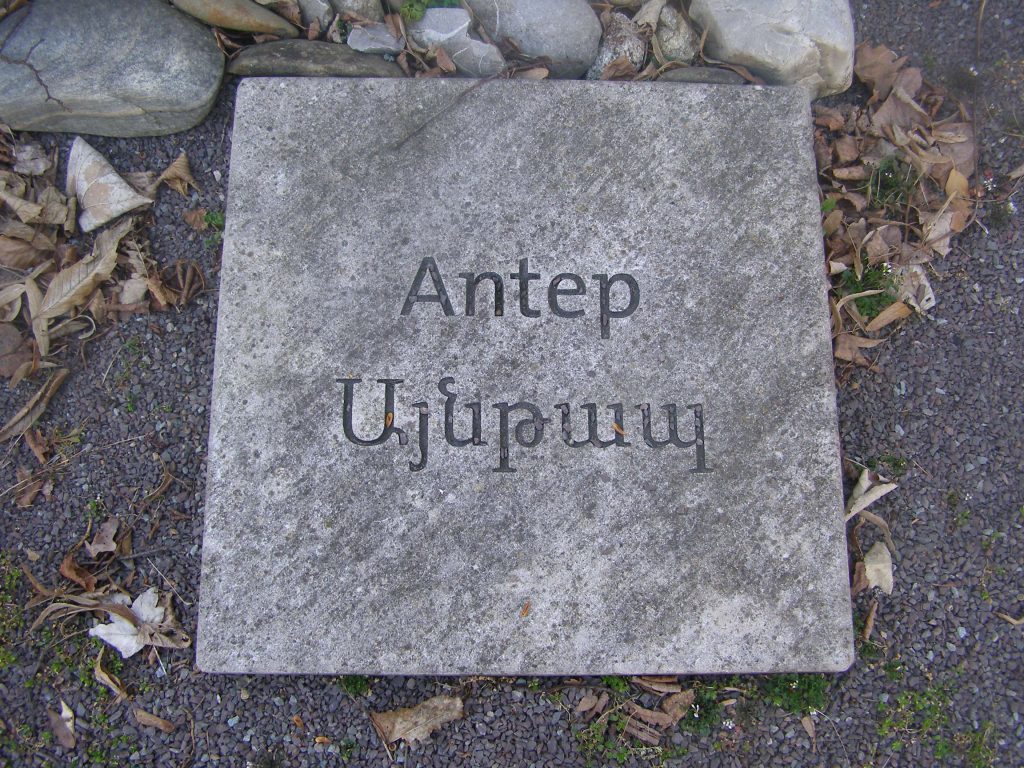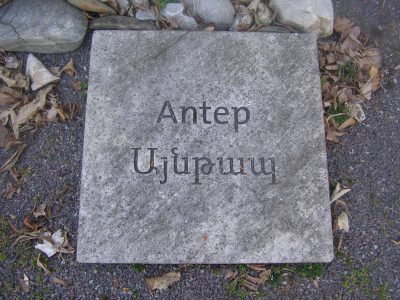
Toponym
“Some believe that Armenians who immigrated from the Ayntap settlement of Alashkert valley called it that way.”[1]
Administration
The sancak of Antep consisted of the two kazas Antep (also: Ayntab, Ayntap, Aintab, Aintap) and Kilis.
After the First World War, Ayntab was part of Syria according to the Treaty of Sèvres; but the success of Turkish War of Independence, Maraş, Antep and Urfa sancaks of former Aleppo Vilayet remained in Turkey after 1921.
History
A large part of the Ottoman sancak of Antep used to be part of the Cilician Armenian state.
Population
According to Ottoman sources, Armenians were the majority in this region in the 16-17th centuries. Residents’ occupations were agriculture and animal husbandry. Until 1915, of the 87,000 inhabitants of the sancak the majority were Armenian until 1915.[2]
“Armenians had been living in this region wedged between the Taurus and Amanus mountain chains since the tenth century, their arrival here coinciding with the creation of military themata occupied by Armenian soldier-colonists. In 1914, 44,414 Armenians lived in the sancak of Ayntab, which was administratively subordinate to the vilayet of Aleppo. More than 36,000 of them lived in the kaza of Ayntab alone, while another 8,000 were to be found in the sancak [kaza] of Kilis.”[3]
Destruction
In 1915-1921 Aintab’s Armenians were massively destroyed. Those who survived the genocide took refuge in Syria, Lebanon, the United States. Later, some of them repatriated to Soviet Armenia. In a few Diaspora communities, Aintabtsis have their own clubs.
